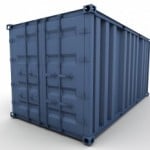 The following is a further posting in a series of articles by David French, a patent attorney with 35 years experience, which will review issues of interest in the field of Cold Fusion.
The following is a further posting in a series of articles by David French, a patent attorney with 35 years experience, which will review issues of interest in the field of Cold Fusion.
On March 12, 2012 Ruby Carat of ColdFusionNow personally interviewed Andrea Rossi in his home in Florida. That interview is available in video format on the ColdFusionNow.org website. [watch] The following is a summary of some of the significant remarks made by Sr Rossi during this interview.
In the last 2 years Rossi has changed his theory as to what’s happening. He’s filed a patent application for the new idea. It’s not yet published.
He is still using a powder. He does so because it has more surface area, more contact with hydrogen. He believes that surface area is important for the reaction so that the hydrogen will be able to access active sites on the nickel. And he still has to preheat the reactor which he does using electricity to increase the temperature.
He believes that when the cold fusion reaction is occurring within the particles, temperatures as high as 1500°C are being reached deep in the active matrix. He recognizes that this is getting close to the melting point of nickel, but that’s OK: if the nickel were to melt it would stop the reaction. This is a safety effect.
Even though he believes he’s getting such high temperatures in the core of the active regions, he’s only achieving output temperatures of 110-200°C. He cannot deliver steam over 200°C (This is still very, very valuable!)
Recently Siemens has introduced a turbine that operates with 30% efficiency operating off a heat source at 251°C (or 261°C). Using this turbine, Rossi will be able to generate all the electricity that he needs to make his process continue indefinitely. As a system, it will be self-contained. It’s not clear whether the Siemens turbine can produce 15 MW, but he used that as an example.
He also answered “Yes!” in response to a question as to whether his system is capable of operating in a “self-sustainable” mode.
Rossi has, for safety reasons, eliminated the external hydrogen tank. His reactor now includes a source of hydrogen bound in molecules contained in a “tablet” which is sealed in the reactor. It is this tablet which releases the necessary hydrogen for the cold fusion reaction. It is this feature which is the focus of his most recent unpublished patent application.
Once the cold fusion reaction stops, the hydrogen is recovered back into the tablet where it is either chemically stored or re-fixed somehow, available for future use. During the cold fusion reaction only a slight amount of hydrogen is consumed: pico-grams. The result is that his reactor will have a six-month lifetime without having any need for refurbishing.
His biggest barrier has been having the system certified for safety. He received great resistance to safety certification as long as he had been using an external bottle of hydrogen as the hydrogen source. The new tablet arrangement has overcome this problem. He is awaiting certification for safety and will be on the market as soon as he receives that certification.
He says that his units are under production presently. But where this is occurring is a big secret. He doesn’t want his Manufacturers hounded by cold fusion enthusiasts.
Actual products are not being manufactured at this time. The “lines” of production are being assembled, and the computer software being programmed. Actual manufacturing of the E-Cat will begin after certification as there will most likely be more design changes during the certification process.
Asked why his industrial units were to be more expensive than commercial home units, said to be delivering power at a cost of $60-$90 per kilowatt, he said that the industrial units were more of a “craft” product at this time: less parts ordered cost more. The industrial units were being produced in low-volume whereas the price quoted for home units was based on a theoretical high volume level of production.
The interview lasts for a total of 29 minutes.
David French is a retired patent attorney and the principal and CEO of Second Counsel Services. Second Counsel provides guidance for companies that wish to improve their management of Intellectual Property. For more information visit: www.SecondCounsel.com.
David French is prepared to address questions included as commentaries to any of his postings or by direct email. In particular, he would like to learn what people need to know in order to better understand patents.



